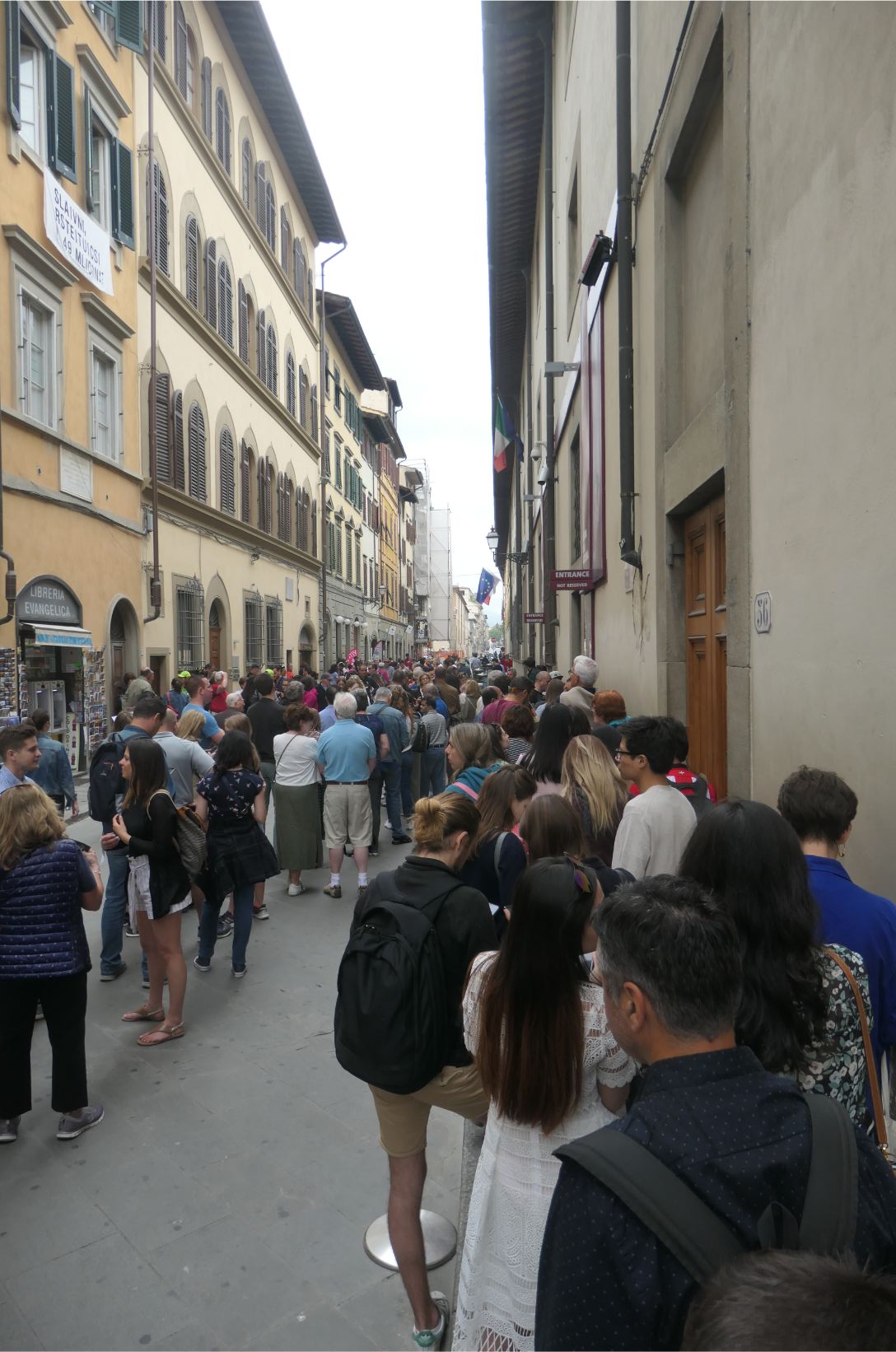
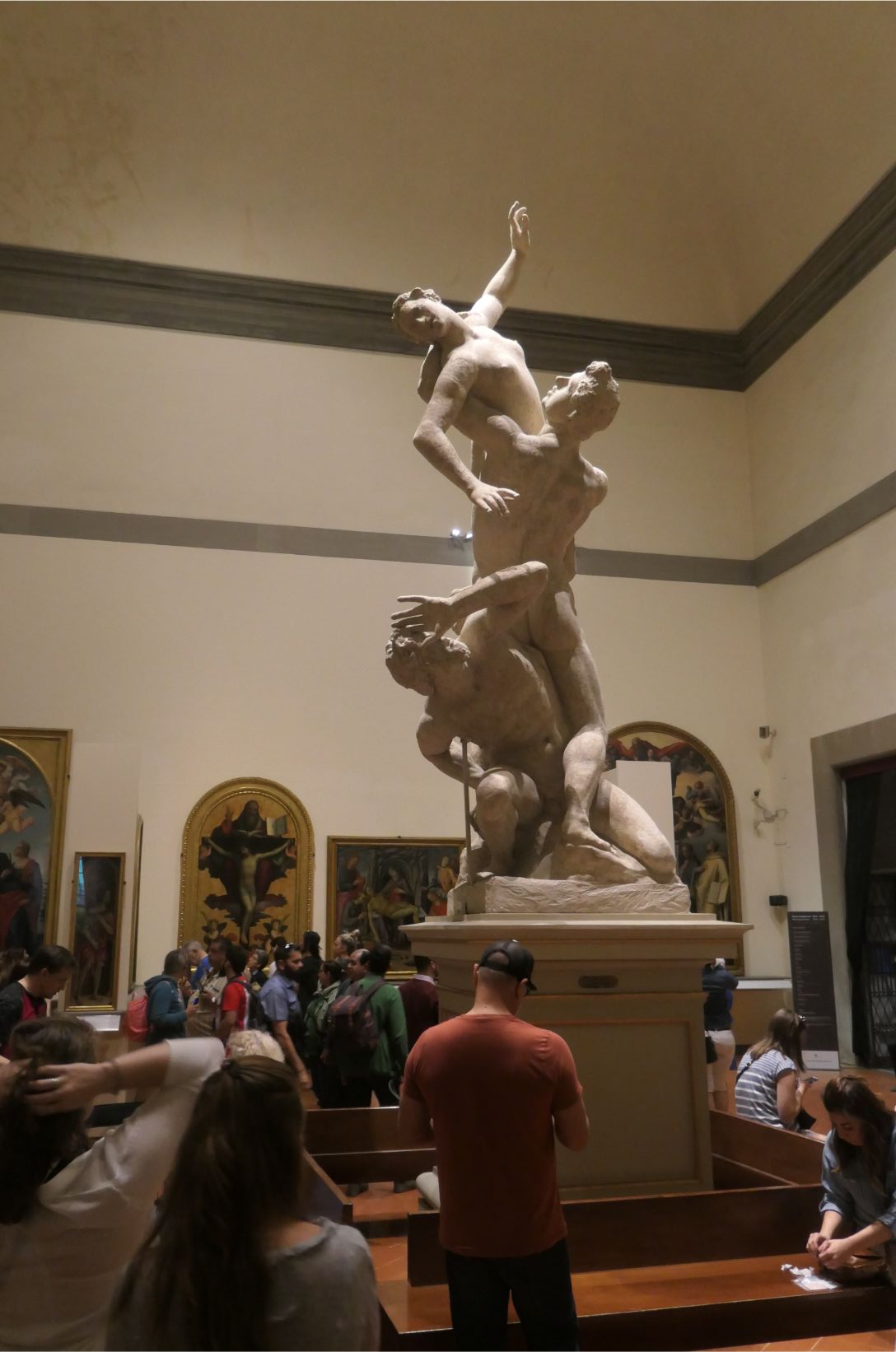

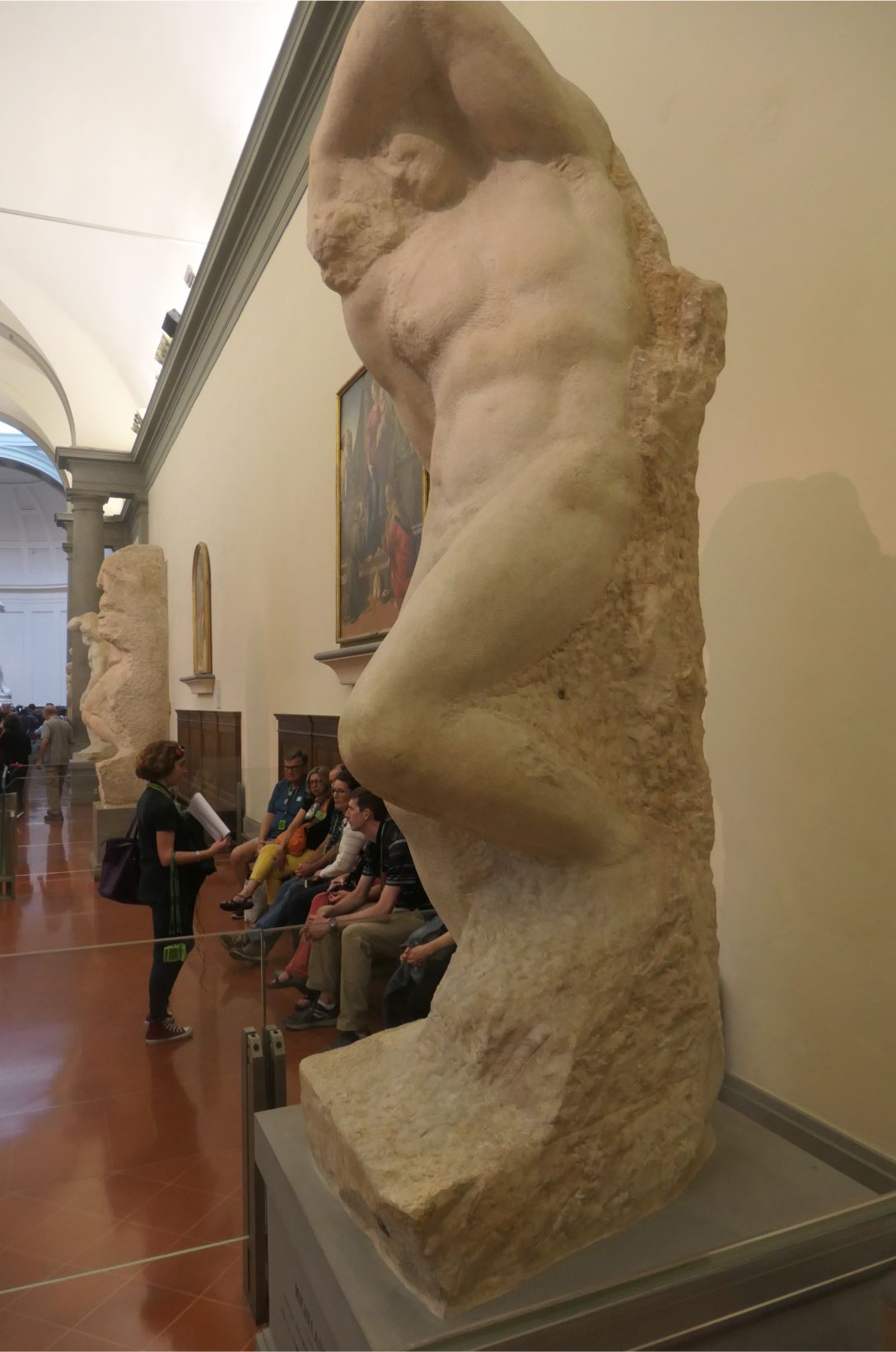
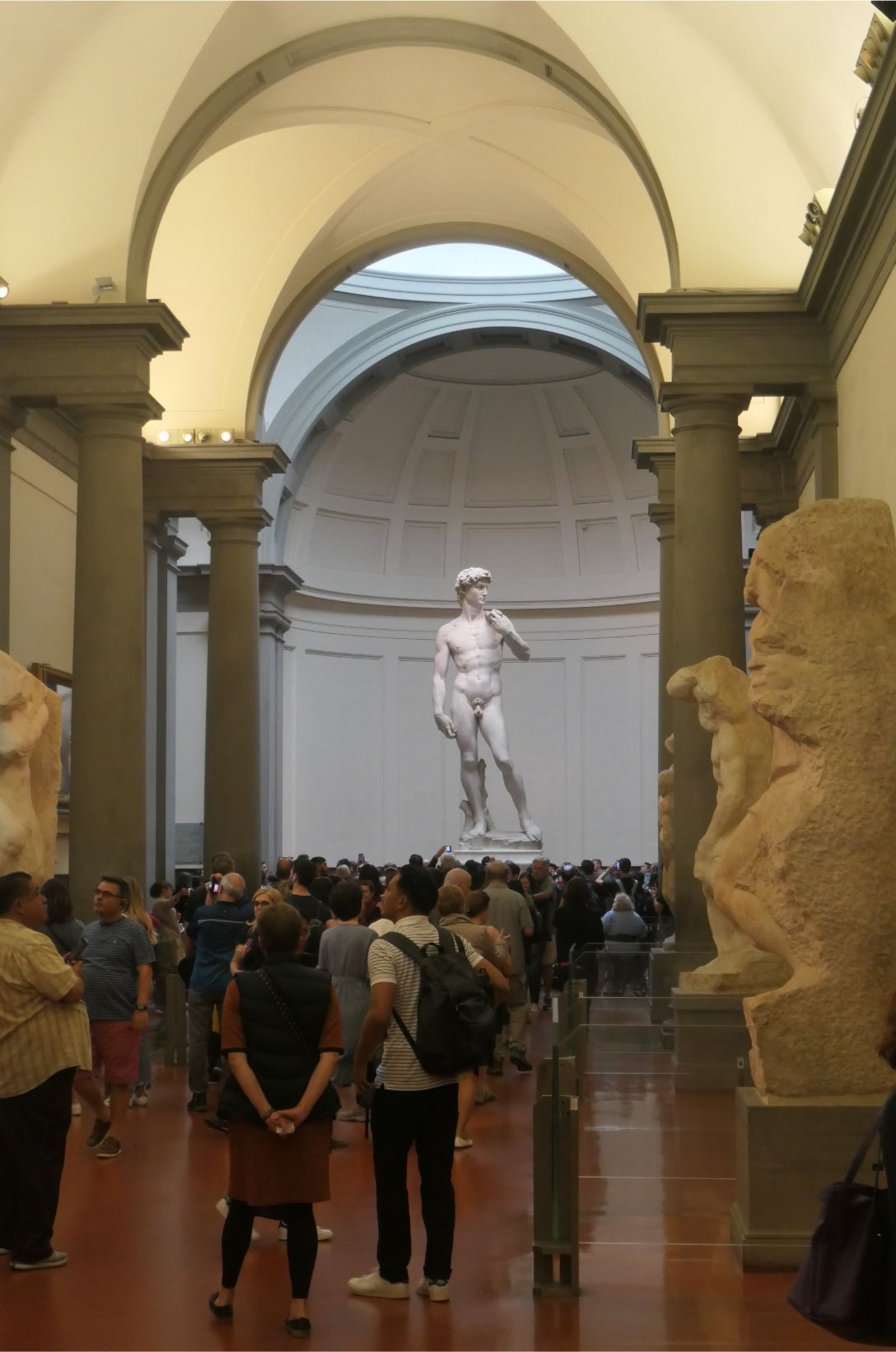

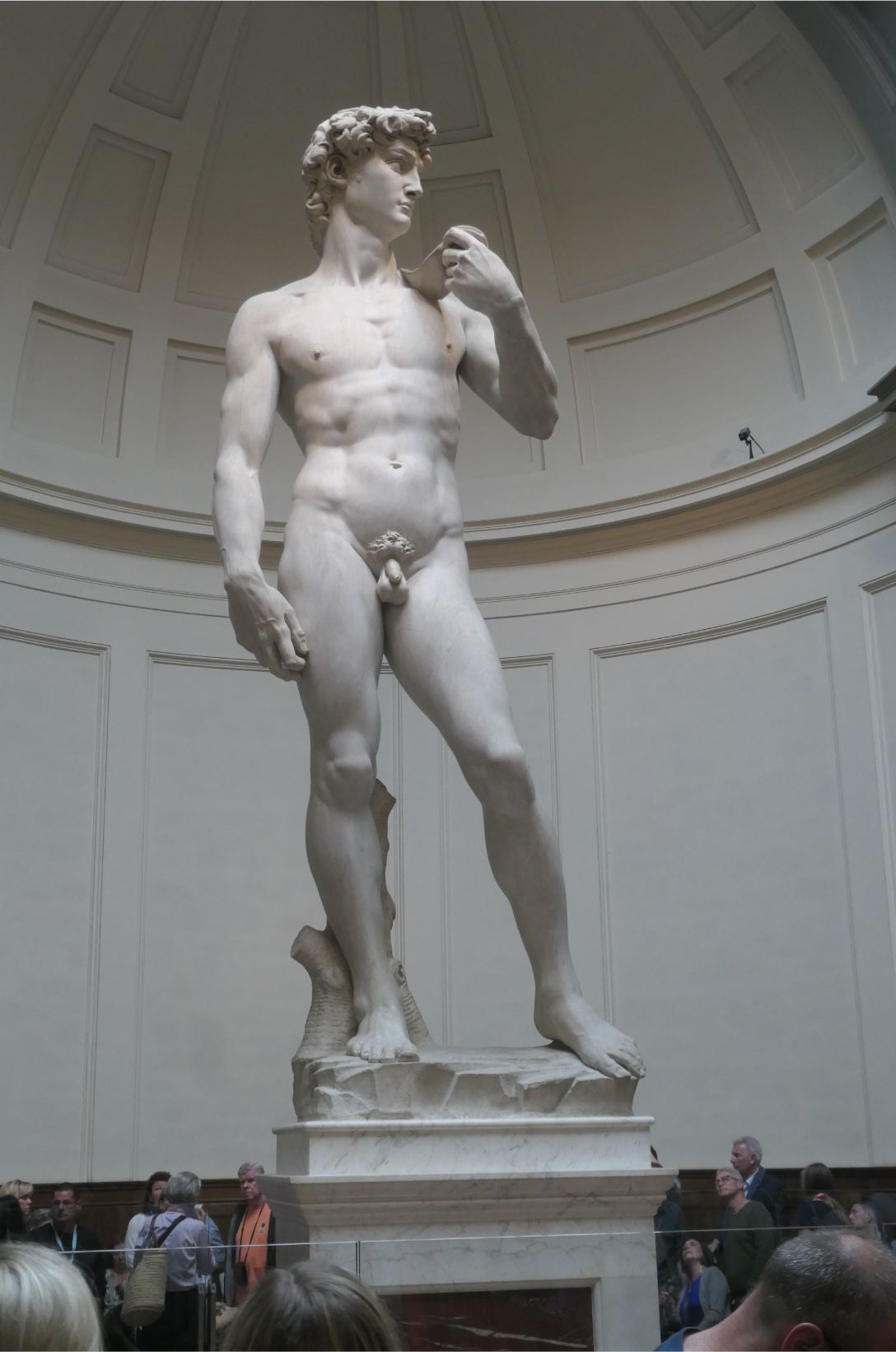

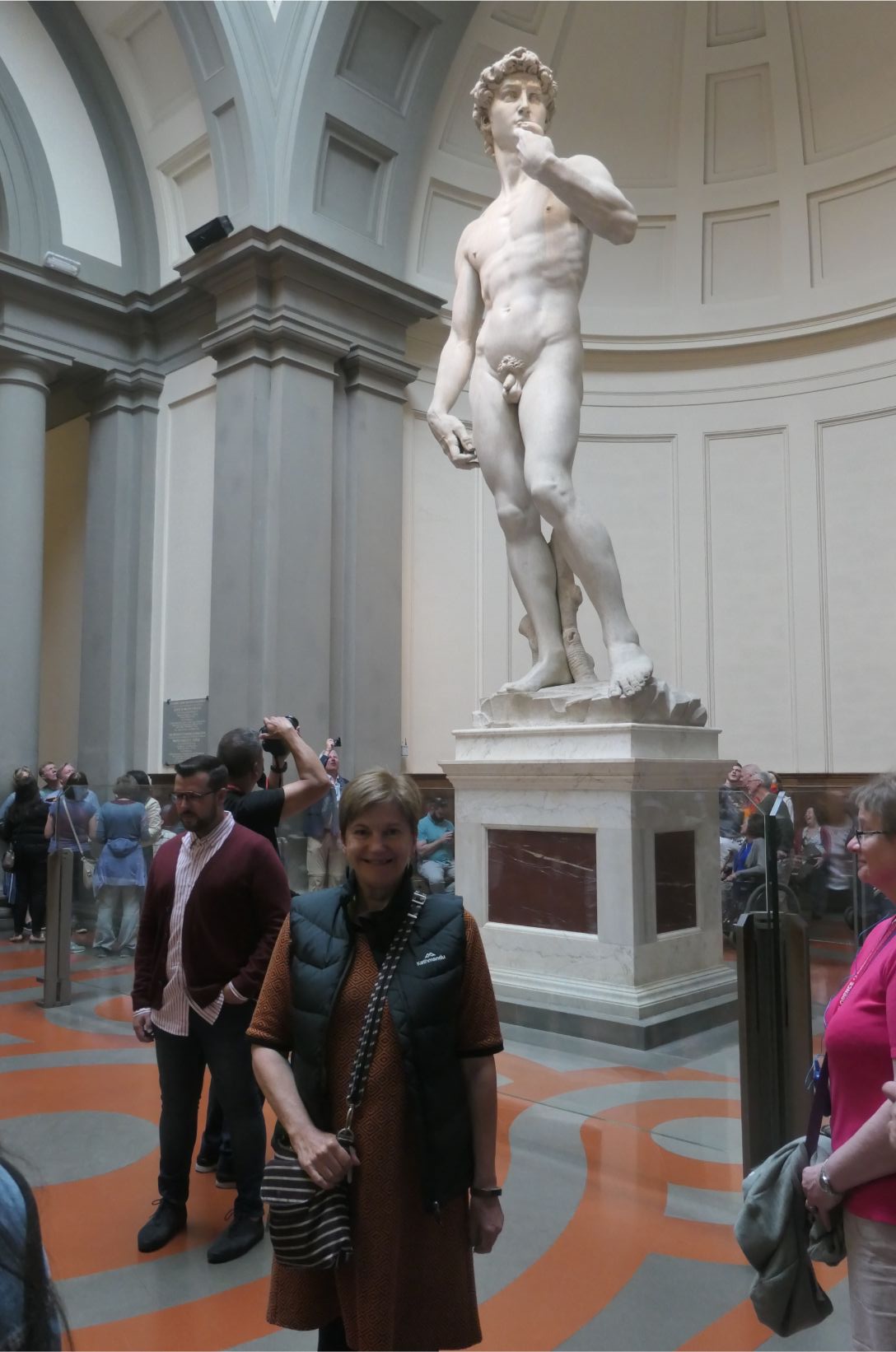

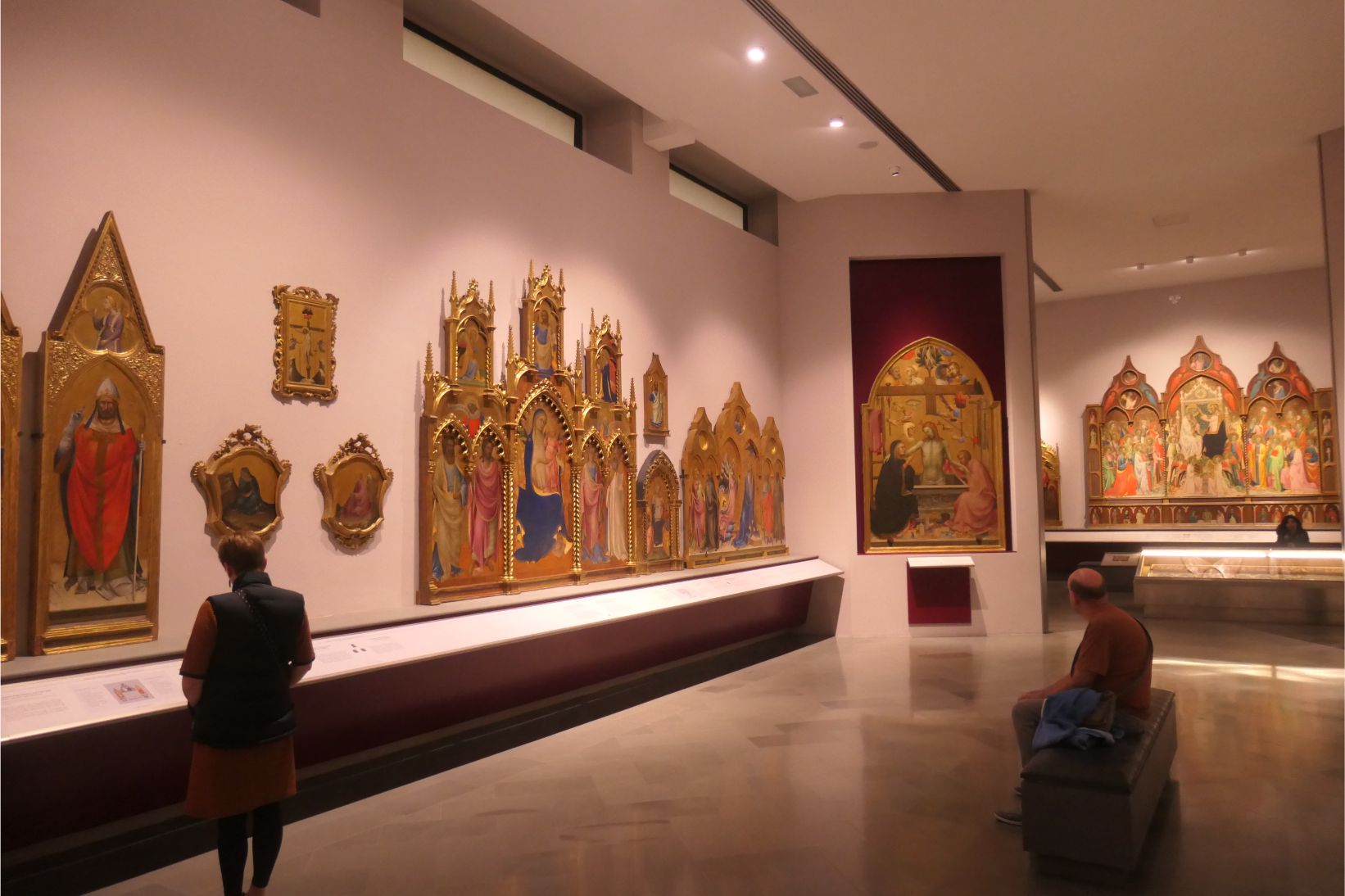
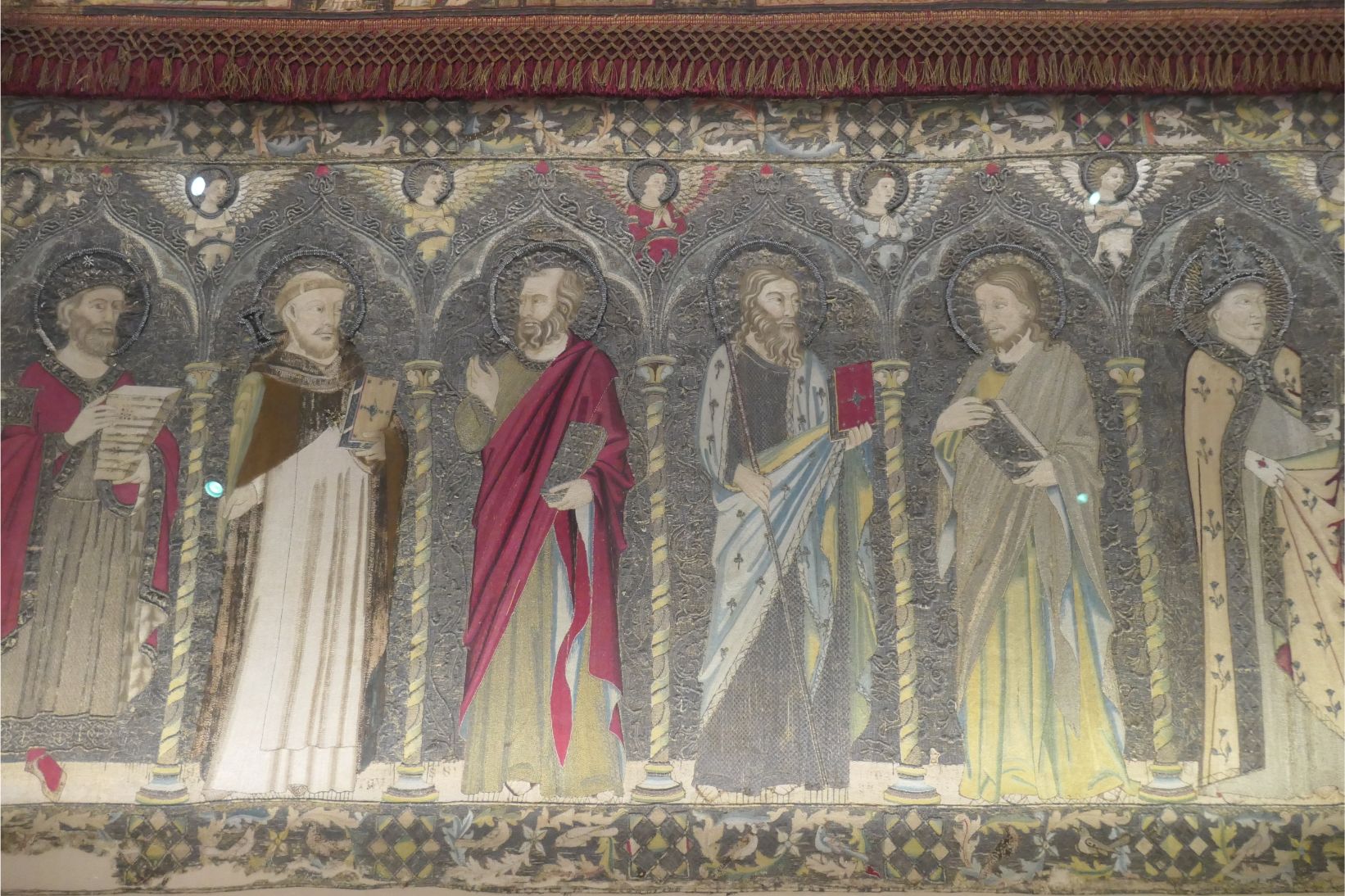


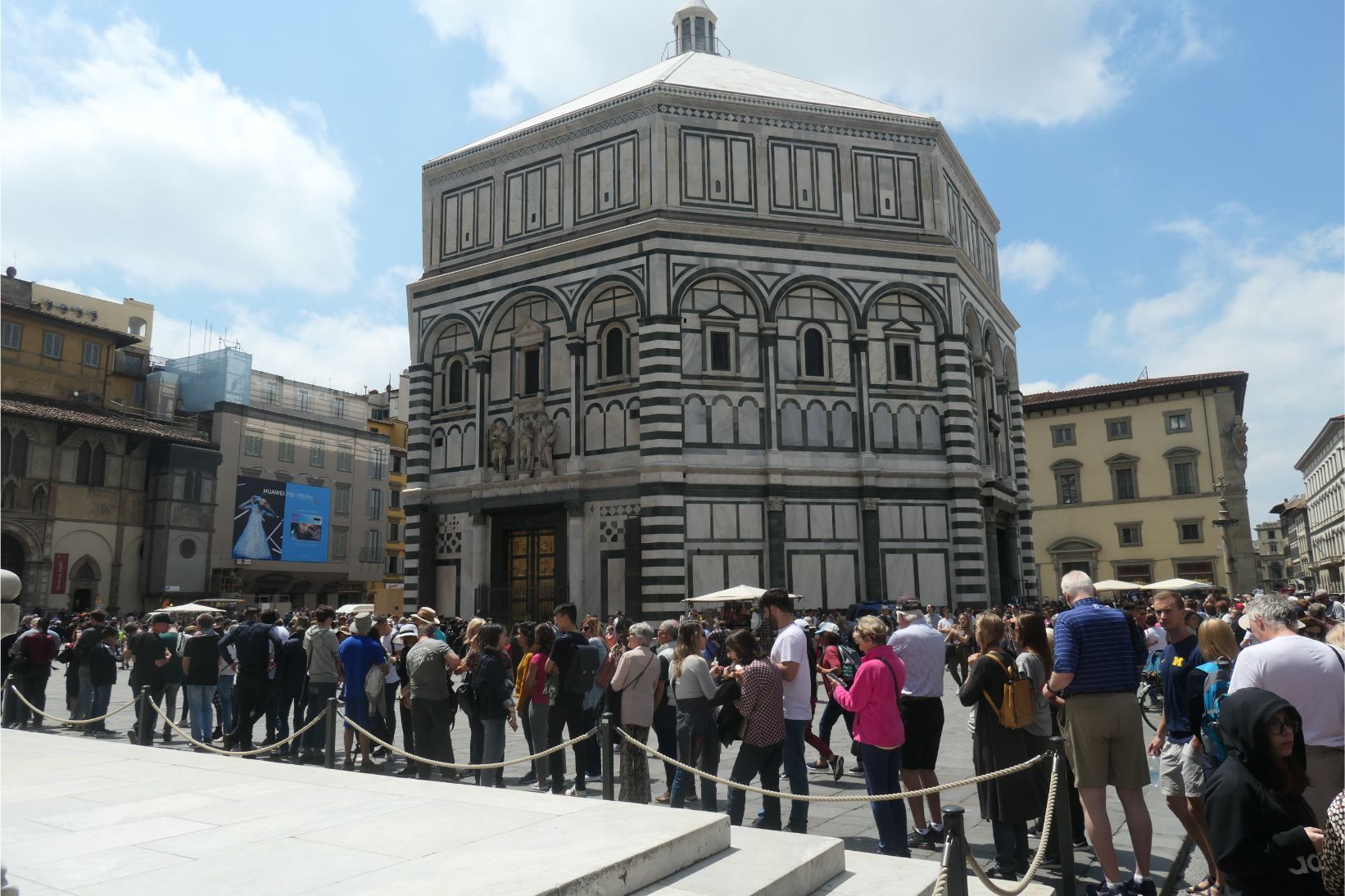
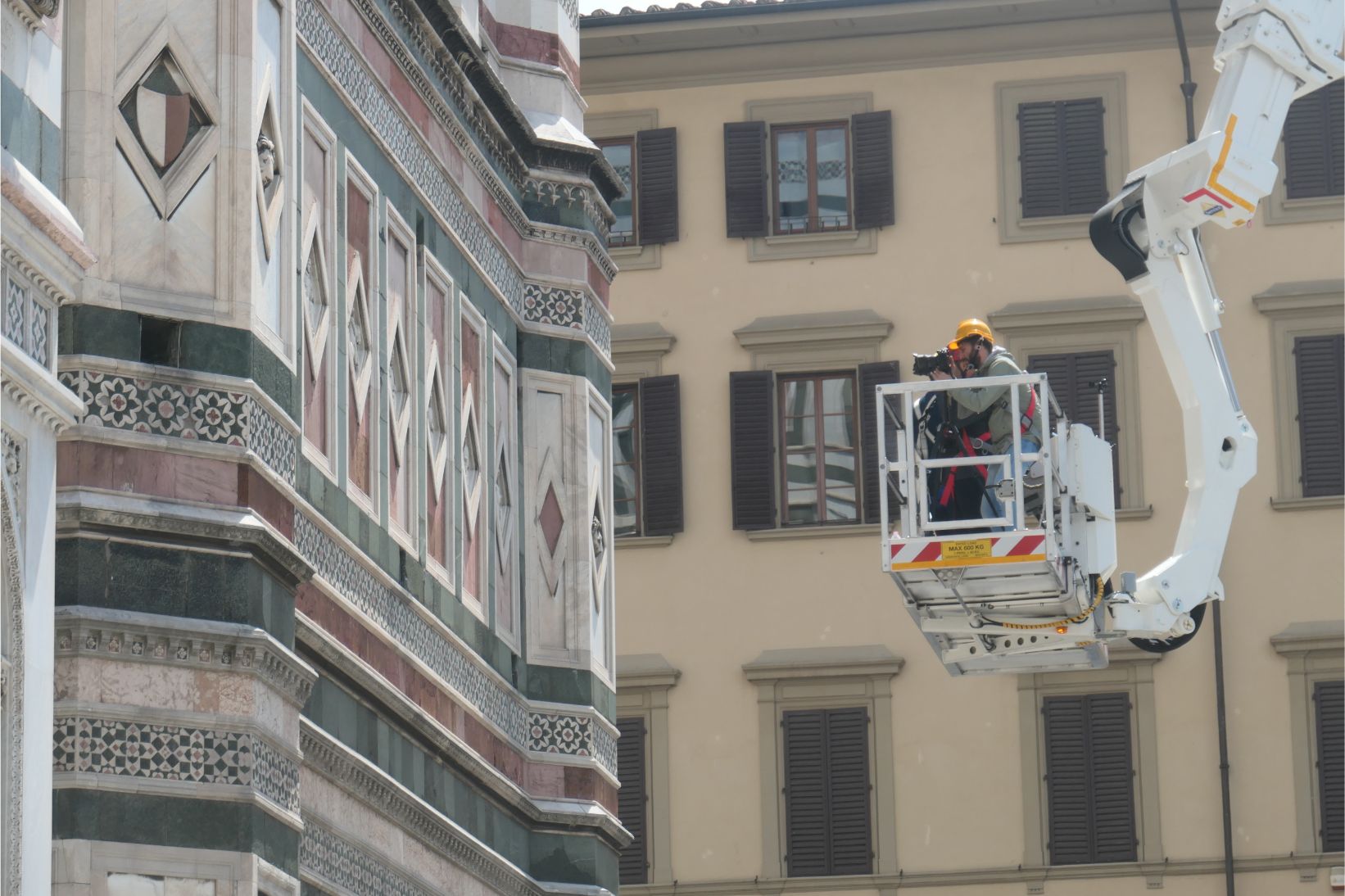



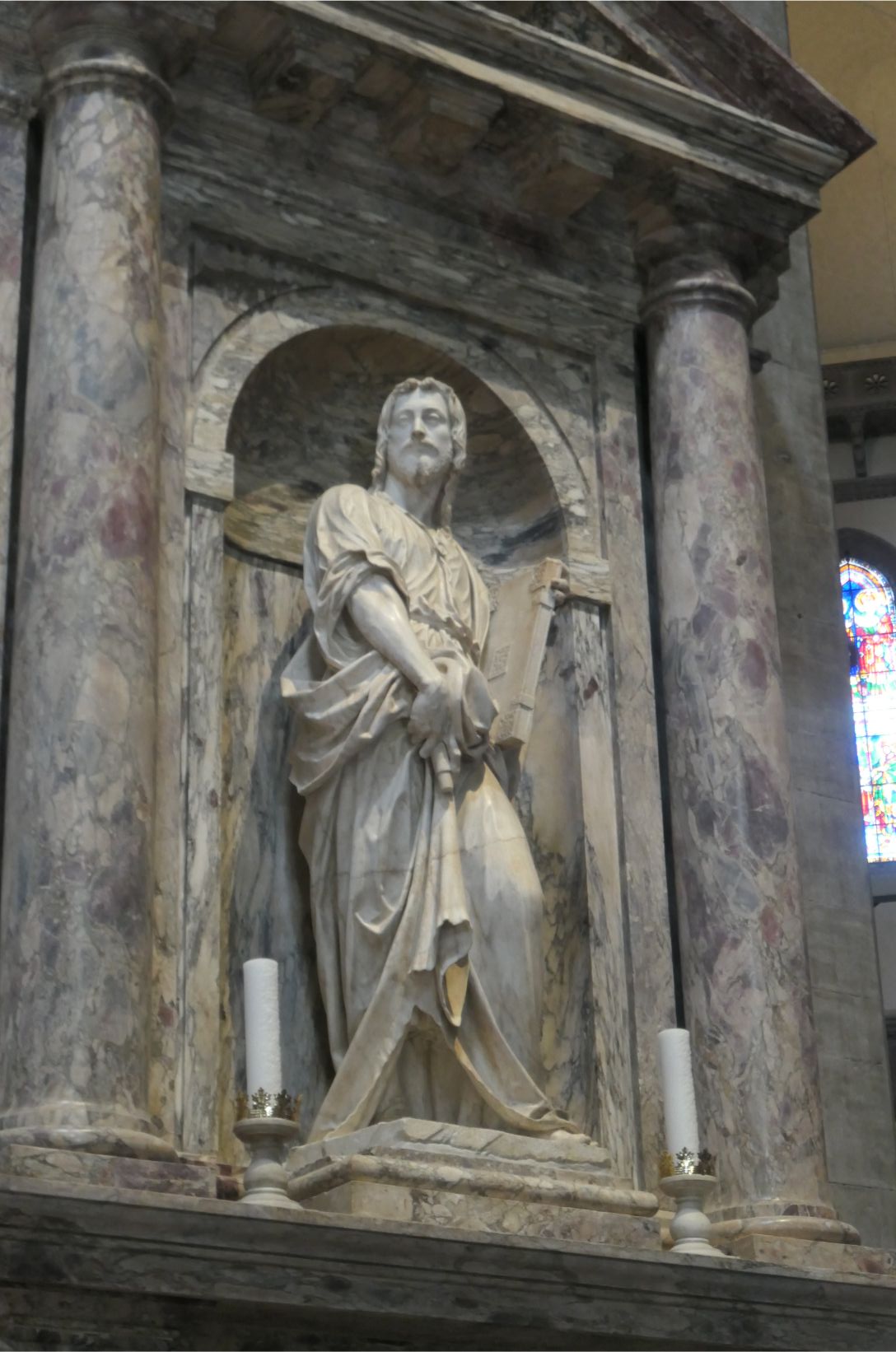


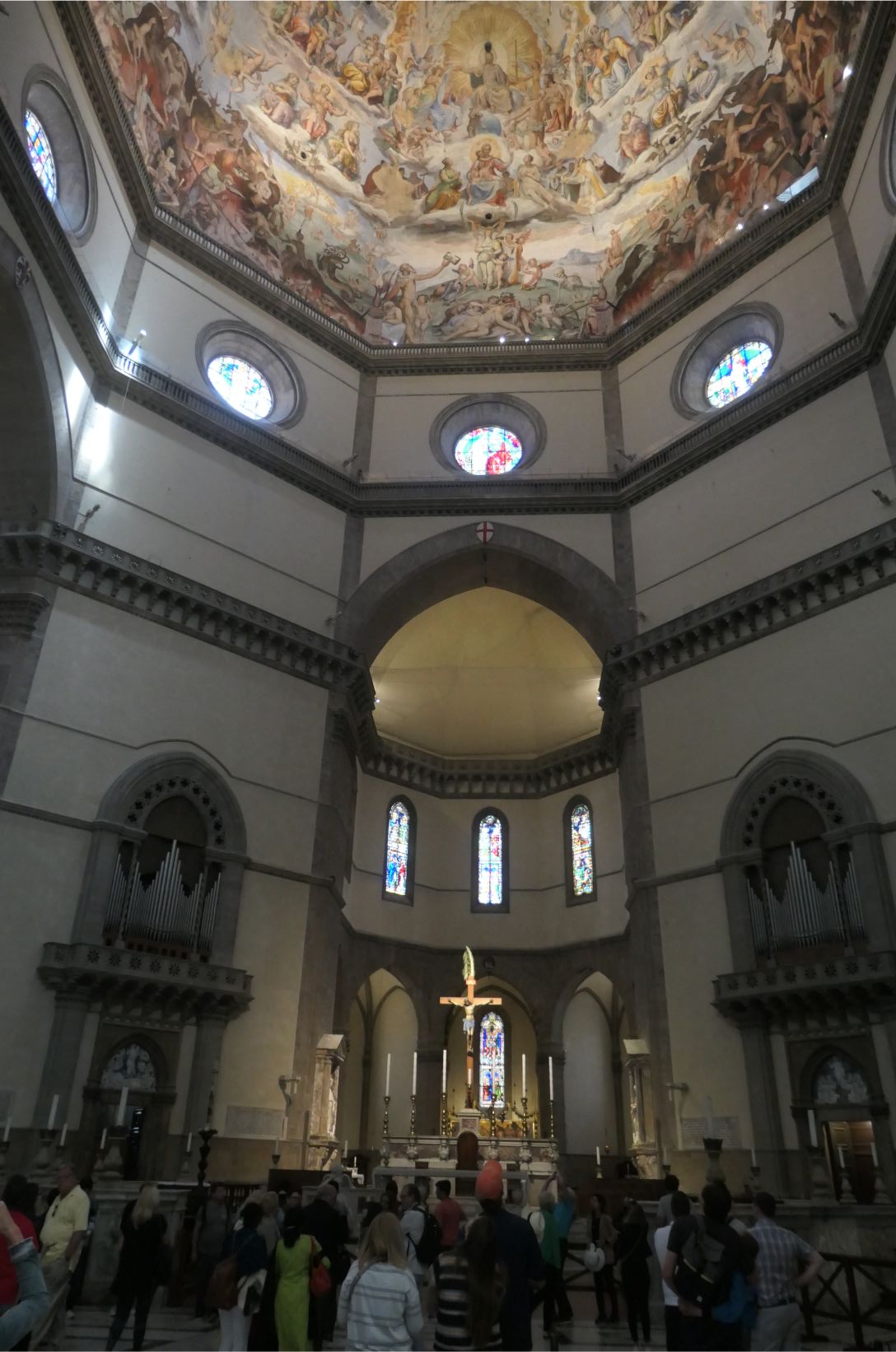


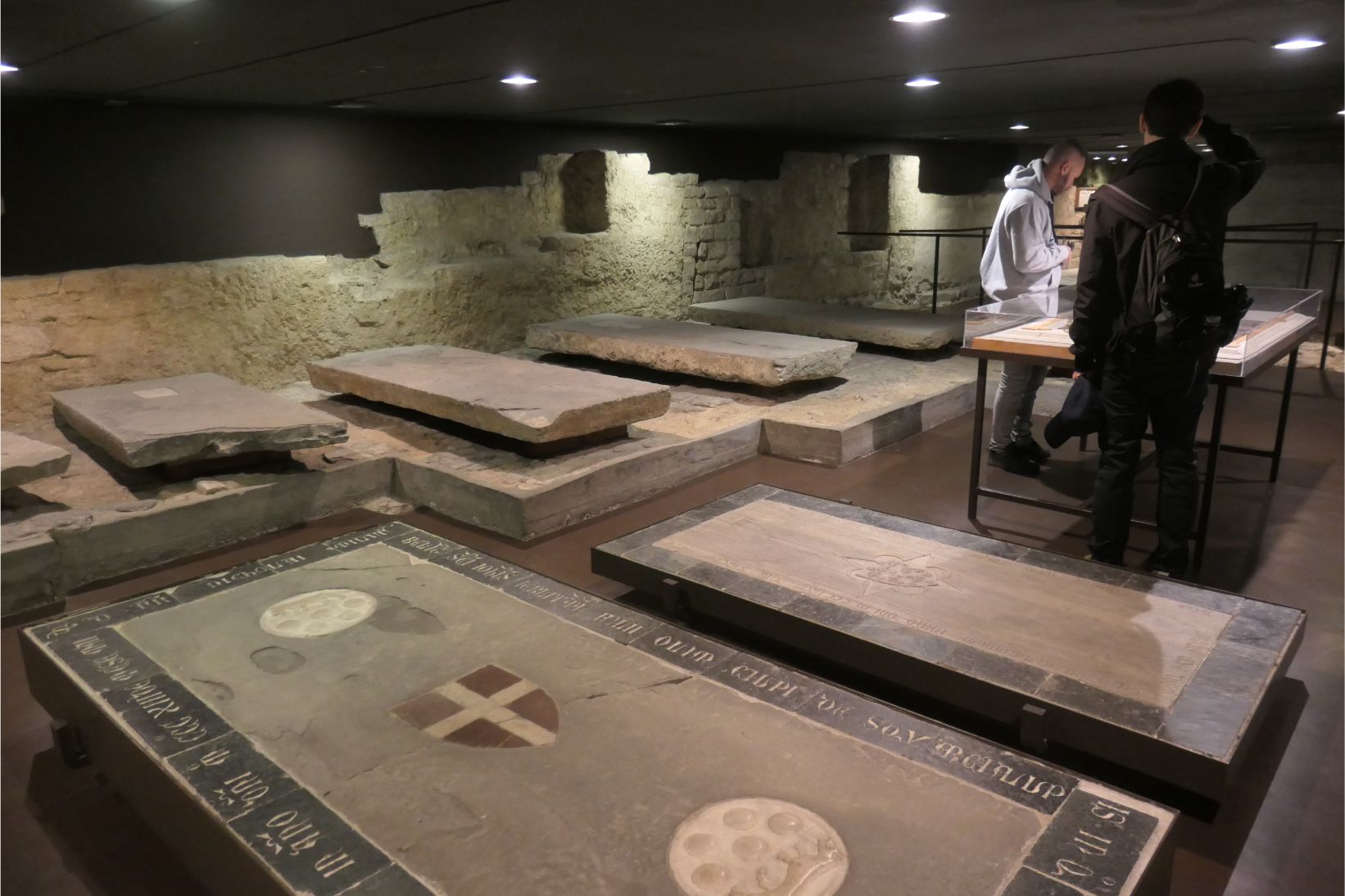
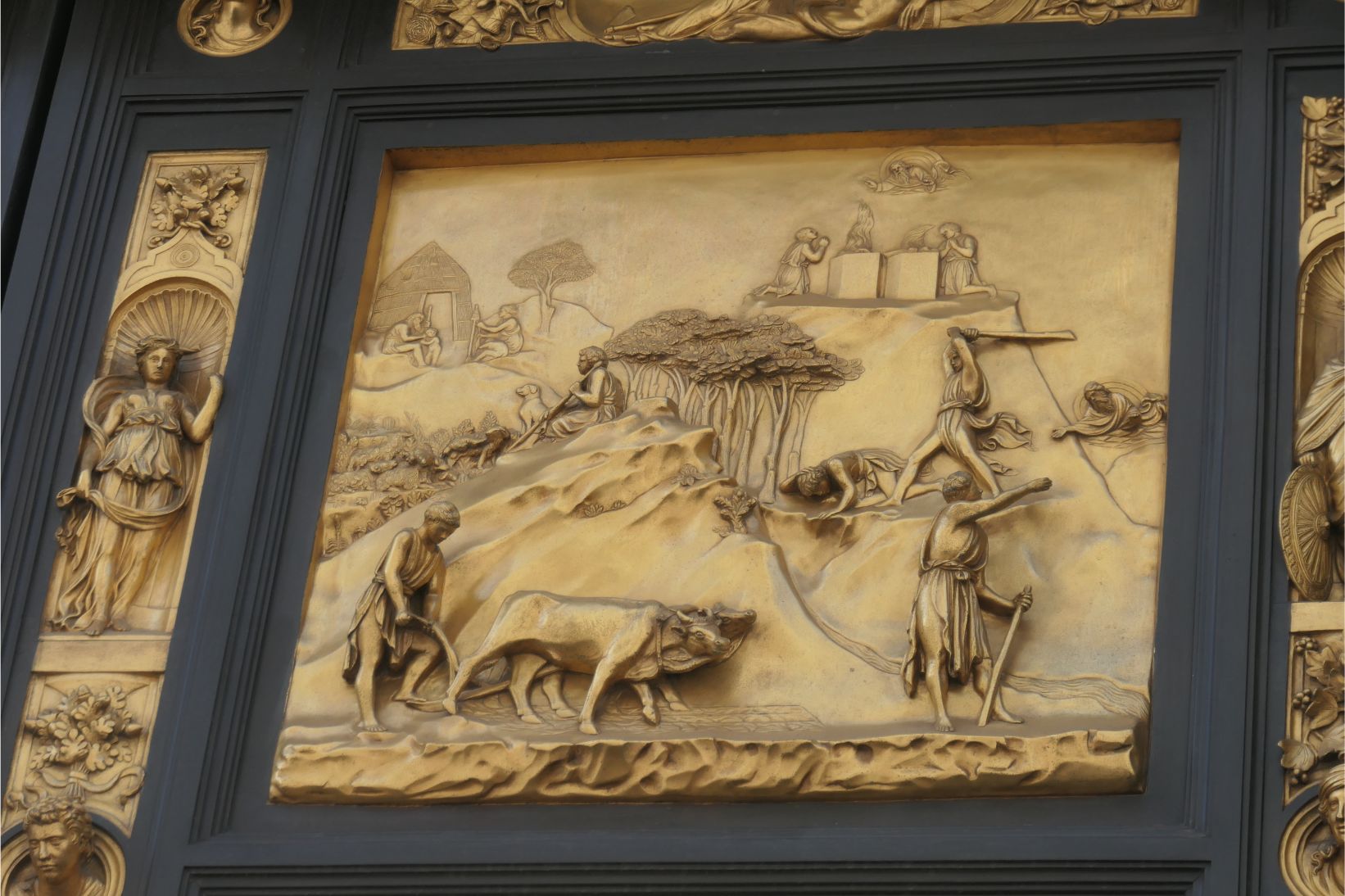


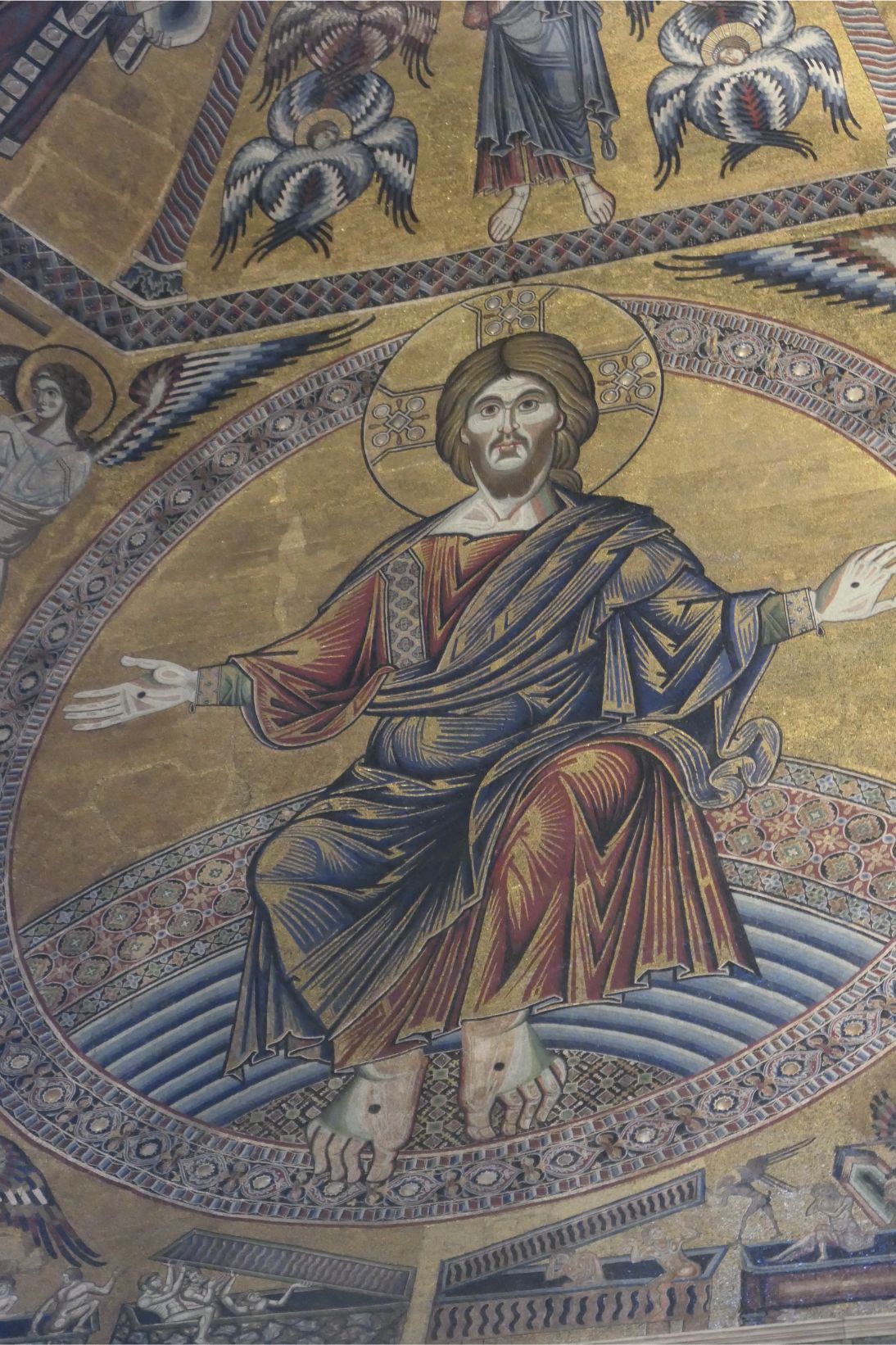


This morning we walked around two corners of the large building on the piazza where we are staying and joined the end of the queue to enter the Galleria dell’Accademia, which is another one of Florence’s art museums housing priceless Florentine Renaissance masterpieces. It was a static queue for most of the time. Every fifteen minutes, the door man counted twenty people and opened the gate for them to enter the building. The skip-the-line queue alongside of us moved just a little faster than we did, kind of like a snail racing a sloth. So, for most of the two hours we stood in line, nothing much happened. We started chatting to the American family behind us and that helped to make the two hour wait a lot more enjoyable.
We finally reached the entry door, which looks a little nondescript from the street, and shuffled inside with eighteen lucky others. The long wait is a drag, but the impact of allowing only twenty people in at a time is that the galleries inside are never really crowded and you have every opportunity to stand up close to great works of art and take your time viewing them. A large marble sculpture greets you as you enter, and on the walls are early Renaissance religious paintings and large altar panels. Apparently many of the paintings in this museum formerly adorned the walls of Florentine monasteries, but were brought to the Accademia for safekeeping during a time Napoleon was in Florence and have remained there ever since.
In the next room the first thing I saw was a couple of unfinished huge marble sculptures, clearly Michelangelo creations. I said to Marg, “Hey look at these works. They’re Michelangelo’s,” to which she replied, “of course, look what’s down there.” I shifted my gaze to the other end of the gallery and there was David on a raised plinth in all his naked glory. It really was a stunning sight. He is every bit as magnificent as he has appeared in all the photos I’ve seen and art books I’ve read. David is a monumental work in every sense. We took our time and walked slowly around him. The two hours spent waiting in line now seemed totally like time well spent.
We wandered through the other galleries, one of which contained plaster casts used in the creation of marble sculptures, and others which featured more altar panels and other paintings of religious scenes, often from the life of Christ. Marg loved an embroidery that appeared almost flawless in its creation, despite it being around seven hundred years old. You almost require a magnifying glass to see how fine the needlework is.
We walked down the Santa Marie Cathedral and joined another long line, though one which moved a good deal faster than David’s queue. It probably only took about ten to fifteen minutes to gain entry to the cathedral. Like others we have visited in recent times across Europe, it was a vast space inside with high walls and a ceiling so high you couldn’t imagine how anyone in medieval times could ever build it. But its interior decoration was quite sparse in comparison with other cathedrals we’ve visited and there were large areas of wall space that had no paintings or other forms of artwork on them at all. Instead, it was the painted ceiling of the inner dome of the Duomo that captured everyone’s attention.
When it was built in the 1400s, this was the largest dome in the world. The architect, Brunelleschi, was a genius who found a way to build a dome that required no supporting timber or stone work to support the masonry. He built an octagonal dome in the shape of an egg, with an outer and an inner dome. The ceiling on the inner dome is a masterpiece of Renaissance religious painting.
Steps leading down from floor level in the cathedral took us to a museum display where some of the original Roman artefacts from a church built here between the 1st and 4th centuries could be seen. Large sections of beautiful Roman mosaic floor tiling remain in very fine condition. There was evidence down here of further construction work done during the early medieval period.
We left the cathedral and entered the adjacent baptistry. This earlier building also featured an octagonal dome-like ceiling that may have inspired Brunelleschi and his colleagues when they were planning the design for the Duomo. It was under restoration when we visited, but we were able to see some untouched sections of the ceiling, and, like everything we have seen here in Florence, they were quite remarkable.

A nuanced Chapman armchair ride through Florence. Brilliant. Great commentary and pics Gaz.
LikeLiked by 1 person